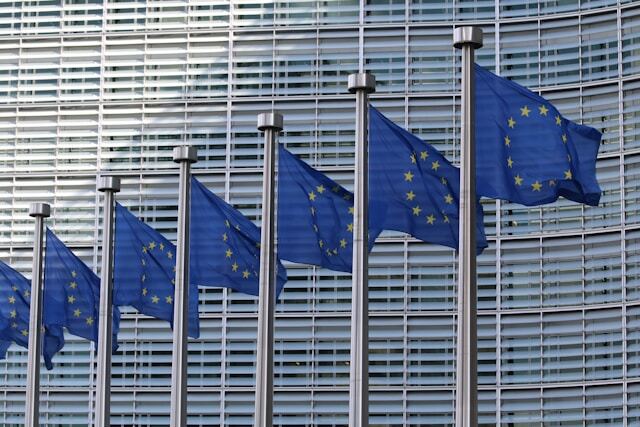Understanding your business’ relationship with water
Water matters For all sectors of economic activity, water is a vital thread, weaving its importance through many aspects of our lives. We use water...
5 min read
 Marc Kennedy
:
22 Oct, 2025
Marc Kennedy
:
22 Oct, 2025

The European Financial Reporting Advisory Group (EFRAG) has released a draft update to the European Sustainability Reporting Standards (ESRS), offering a more streamlined and focused approach to ESG disclosures under the Corporate Sustainability Reporting Directive (CSRD). As the public consultation closed on 29 September 2025, and the final text is expected to be submitted to the European Commission in October, now is the time for reporting teams to prepare for what’s ahead.
We have analysed the update in detail. In this blog post, we break down the key updates, explain how they may affect your reporting approach, and share practical considerations for what to do next.
Earlier this year, two proposals - the Omnibus and ‘stop-the-clock’ - introduced changes to the Corporate Sustainability Reporting Directive (CSRD), the EU Taxonomy, and the Corporate Sustainability Due Diligence Directive (CSDDD).
The ‘stop-the-clock’ proposal, which was approved in April, postponed reporting requirements by two years for in-scope companies that are yet to start reporting. Meanwhile, the Omnibus proposal aimed to simplify and reduce reporting burdens.
Until July, the details of these simplifications were unclear. That changed with the release of EFRAG’s draft update to the ESRS. Although not yet final, this draft gives us a strong indication as to where the revised guidance will ultimately land.
As the cornerstone of CSRD reporting, the ESRS provides a common framework for how thousands of companies across Europe disclose their environmental, social, and governance (ESG) impacts and risks. The draft revision aims to reduce unnecessary complexity while enhancing the decision-usefulness of disclosures.
In practical terms, the update brings:
These changes are designed to ease the reporting burden, particularly for companies early in their CSRD journey, while still preserving the credibility and comparability that stakeholders require.
Here’s a closer look at the most impactful elements of the draft revision.
Example for Disclosure Requirement E4-5 – Metrics related to biodiversity and ecosystems change%20(4).png?width=1380&height=1346&name=Untitled%20(1380%20x%201346%20px)%20(4).png)
1. Significantly Reduced Volume of Mandatory and Voluntary Disclosures
The total number of data points has been reduced by 68%, and the number of mandatory disclosure requirements has dropped by 57%.
In addition, one of the most significant updates is the removal of voluntary data points from the core standards. These have now been moved to a separate guidance document, reducing the complexity of what needs to be disclosed by default.
This means companies can concentrate efforts on reporting information that’s material to their operations and value chains.
2. Revised Approach to Materiality and Topical Requirements
Some of the structural burdens around topic-by-topic disclosure have also been lifted:
3. Clarified meaning between ESRS topics
The original framework made the distinction between ESRS topics somewhat unclear. With the revision, the structure of the Standards has been updated and streamlined compared to the original framework. This streamlining places ESRS 2 at the core for cross-cutting themes. The revised drafts explicitly clarify the boundaries and interactions between individual Environmental Standards.
|
Standard
|
Interacting Standard
|
Clarification of Boundary
|
| ESRS E2 Pollution | ESRS E1 Climate change |
ESRS E1 addresses emissions to air from the seven greenhouse gases (GHGs). These specific GHG emissions are not to be included in DR E2-4 (Pollution of air, water and soil). |
| ESRS E2 Pollution | ESRS E3 Water |
ESRS E3 addresses the use of water resources, including the volume of water discharges. Conversely, pollutants, including microplastics, emitted to water (freshwater and ocean) are addressed in ESRS E2. |
| ESRS E2 Pollution | ESRS E4 Biodiversity |
ESRS E4 addresses pollution as a direct impact driver of biodiversity loss, specifically covering the resulting impacts, risks, and opportunities on ecosystems and biodiversity. Meanwhile, the underlying pollutant emissions are addressed in ESRS E2. |
| ESRS E2 Pollution | ESRS E5 Resource use |
ESRS E5 covers resource use and the transition to a circular economy but does not address emissions of pollutants generated in resource extraction, transformation, use, or from waste; these emissions are covered by ESRS E2. |
| ESRS E3 Water | ESRS E1 Climate change |
ESRS E1 addresses acute and chronic physical risks arising from water and ocean-related hazards caused or exacerbated by climate change (e.g., drought, flood, sea level rise). |
| ESRS E3 Water | ESRS E4 Biodiversity |
ESRS E3 addresses the use of water resources, whereas impacts on biodiversity and ecosystems related to the use of water are addressed in E4. ESRS E4 also specifically covers the conservation and sustainable use of and impact on freshwater aquatic ecosystems and oceans/seas. |
| ESRS E4 Biodiversity | ESRS E5 Resource use |
ESRS E5 addresses resource inflows, waste, and circular economy principles, while the impacts on biodiversity and ecosystems arising from these topics are addressed in ESRS E4. |
ESRS E2 – Pollution
The Pollution standard is now more clearly defined. Notably:
ESRS E3 – Water and Marine Resources
This section now includes several mandatory metrics:
ESRS E4 – Biodiversity and Ecosystems
The E4 updates reflect growing expectations around nature-related disclosure:
The ESRS update offers a valuable opportunity to recalibrate your sustainability reporting strategy. Here’s how the draft changes may affect your approach:
For many companies, this update will come as a relief, but also a call to action. With greater freedom comes the need for clearer internal prioritisation and more consistent application of materiality.
At Natcap, we work with organisations to streamline and automate their nature reporting and disclosures. Our team of experts can help you:
Whether you’re revising your existing sustainability reporting strategy or preparing your first CSRD-aligned disclosure, we’re here to support you with tools, data, and advisory expertise.
The proposed ESRS updates represent a significant step toward more focused, practical, and impactful sustainability reporting. They offer a real opportunity for companies to shift from compliance-driven exercises to more strategic, stakeholder-oriented communication.

Water matters For all sectors of economic activity, water is a vital thread, weaving its importance through many aspects of our lives. We use water...

If you're starting to get acquainted with the emerging set of voluntary and (soon to be regulated) nature-reporting requirements, you might have...

The Taskforce on Nature-related Financial Disclosures (TNFD) released its latest status report as part of Climate Week NYC 2025, and the findings...